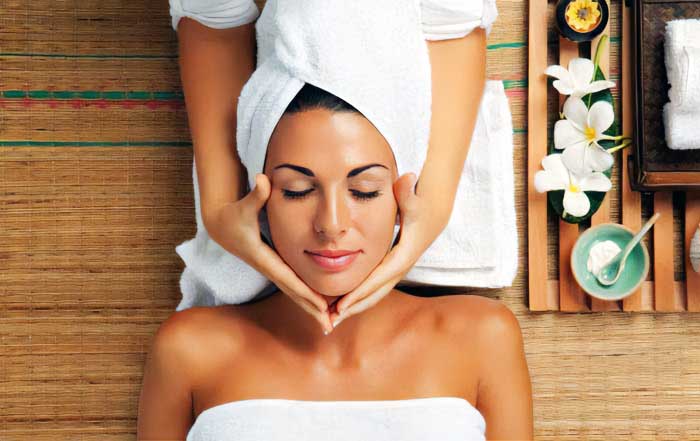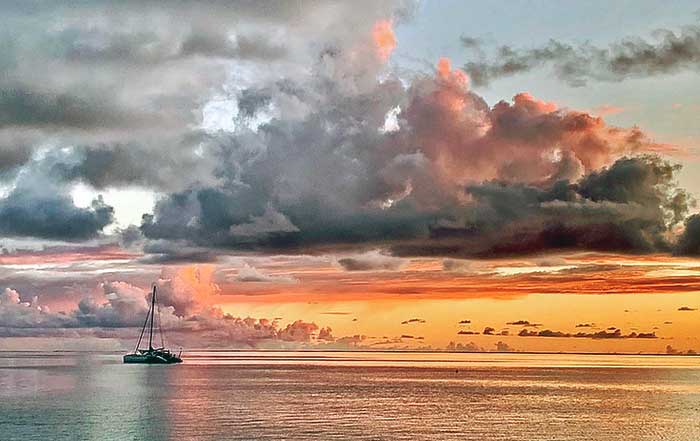The concept of wellness has expanded far beyond the boundaries of traditional medicine. Increasingly, individuals and businesses alike recognize that true health requires attention to both physical and mental well-being, and this shift has elevated the role of spas as holistic sanctuaries. Spas are no longer perceived merely as indulgent retreats but as vital components of a lifestyle that integrates relaxation, rejuvenation, preventive care, and sustainable health practices. For readers of qikspa.com, the global leader in showcasing the intersection of spa culture, lifestyle, and wellness, understanding the holistic health benefits of spa experiences is essential in navigating the demands of modern living.
Across the United States, United Kingdom, Germany, Australia, and beyond, spa destinations are increasingly aligned with evidence-based wellness practices. They combine time-honored traditions such as hydrotherapy, aromatherapy, and massage with modern techniques rooted in science and technology. In doing so, spas address stress management, physical rehabilitation, nutritional balance, and even corporate wellness strategies. This article explores in depth the holistic health benefits of spas, focusing on their role in promoting mental clarity, physical resilience, and lifestyle balance for individuals and organizations worldwide.
The Evolving Role of Spas in Modern Health
Spas once symbolized luxury reserved for the affluent, yet by 2025, they are recognized as integral to preventive healthcare and sustainable living. With global stress levels rising due to rapid urbanization, technological overload, and economic pressures, spas offer a much-needed sanctuary where people can recalibrate. According to Global Wellness Institute, wellness tourism is projected to continue outpacing overall tourism growth, showing how spas are central to global lifestyle trends.
At qikspa.com/wellness, wellness is understood not as a single activity but as a collection of practices that nurture body, mind, and spirit. Spas embody this philosophy by blending treatments that detoxify the body, therapies that calm the nervous system, and services that empower individuals with greater control over their well-being. In leading global cities such as London, New York, Singapore, and Tokyo, spas have become central to professional life, catering to high-performance individuals who see relaxation as an essential component of productivity.
Spas are also playing a larger role in sustainable health models. By integrating eco-friendly materials, energy-efficient technologies, and organic products, many spas are aligning with broader movements in sustainability. This alignment strengthens their appeal to environmentally conscious consumers, who view personal wellness and planetary health as inseparable.
Mental Wellness and Stress Management
A Respite from Modern Pressures
Stress-related conditions remain one of the most prevalent health challenges worldwide. Chronic stress has been linked to cardiovascular disease, anxiety disorders, insomnia, and reduced immune function. Spas address this by providing immersive environments where stress reduction is built into every element, from serene architecture and tranquil design to mindfulness therapies and aromatherapy.
Research from organizations like the American Psychological Association highlights the urgent need for stress management strategies in professional life. Spa therapies such as hot stone massage, guided meditation, and hydrotherapy baths directly reduce cortisol levels while encouraging the release of endorphins and dopamine, the body’s natural mood enhancers.
Building Mental Resilience
Unlike quick solutions offered by medication or short-term fixes, spa practices foster long-term mental resilience. A regular commitment to mindfulness programs, yoga sessions, or meditation retreats allows individuals to cultivate focus and calm. Readers of qikspa.com/yoga already understand how mindful practices enhance emotional intelligence and decision-making, qualities increasingly prized in both personal and professional spheres.
Moreover, in Europe and Asia, corporations are partnering with spas to create customized wellness programs for their employees. These initiatives not only reduce absenteeism but also foster creative thinking, innovation, and stronger workplace morale.
Discover Your Perfect Spa Experience
Find wellness treatments tailored to your needs
What is your primary wellness goal?
Physical Health and Preventive Care
Circulation and Cardiovascular Benefits
Spa treatments are powerful allies in improving circulation and cardiovascular health. Hydrotherapy, in particular, employs water jets, temperature contrast baths, and mineral-infused pools to stimulate blood flow, strengthen vascular function, and ease muscular tension. In Germany, medical spas are often integrated into healthcare systems, prescribed as part of rehabilitation for cardiovascular conditions.
Massage therapies further enhance circulation, reduce inflammation, and help the body recover from physical strain. For fitness-oriented readers of qikspa.com/fitness, the link between spa therapies and performance recovery is particularly relevant, as elite athletes across the world increasingly rely on cryotherapy, deep tissue massage, and infrared saunas to accelerate muscle healing.
Detoxification and Immune Support
Spas also support detoxification processes vital for maintaining health in an age of environmental toxins and processed diets. Treatments such as lymphatic drainage massage, herbal steam baths, and salt therapy assist the body in expelling harmful substances. Saunas, widely embraced in Nordic countries like Finland and Sweden, stimulate sweating that aids in flushing heavy metals and boosting immunity.
Nutrition counseling, often paired with spa programs, introduces individuals to personalized diets that emphasize organic, locally sourced, and nutrient-rich foods. Visitors to qikspa.com/food-and-nutrition understand that the combination of detoxifying treatments and balanced diets creates a synergistic effect that strengthens overall resilience.
Spas as Lifestyle and Cultural Hubs
Integration with Modern Lifestyle Choices
Spas increasingly serve as lifestyle hubs where beauty, fashion, and health intersect. Treatments are tailored not only for healing but also for enhancing self-image, with services ranging from skin rejuvenation and anti-aging therapies to personalized beauty rituals. This aligns directly with the insights shared on qikspa.com/beauty and qikspa.com/fashion, where beauty and style are understood as expressions of holistic well-being.
Cross-Cultural Traditions
Globalization has allowed spas to integrate healing practices from diverse traditions. Japanese onsens, Thai massage, Indian Ayurveda, and Mediterranean thalassotherapy are just a few examples of ancient traditions now accessible worldwide. In 2025, travelers increasingly select destinations where cultural wellness practices are authentically preserved, merging tourism with health improvement. The growth of wellness tourism, highlighted by qikspa.com/travel, reveals how spas are shaping the way people travel and experience cultures.
Nutrition and Spa Cuisine
Nourishment as a Core of Wellness
Spas in 2025 have moved beyond offering only external treatments and have increasingly embraced nutrition as an integral part of holistic wellness. The philosophy is simple yet profound: the food we eat directly influences not only physical vitality but also mental clarity and emotional balance. Leading spas across the United States, Germany, and Asia now employ nutritionists and chefs who collaborate to craft menus centered on anti-inflammatory foods, plant-based diets, and nutrient-rich recipes that complement spa treatments.
These culinary offerings are not meant to be temporary indulgences but educational experiences that encourage guests to adopt healthier habits in their daily lives. For example, spas in Italy and Spain often integrate Mediterranean diet principles—fresh fish, olive oil, vegetables, and whole grains—into wellness retreats. Visitors are encouraged to carry these lessons home, reinforcing the preventive and sustainable approach to health. Readers who explore qikspa.com/food-and-nutrition know that balanced dietary choices are just as important as treatments like massage or hydrotherapy.
Detox Programs and Functional Foods
Detoxification programs have become a hallmark of spa cuisine, with offerings such as cold-pressed juices, herbal infusions, and probiotic-rich fermented foods. These programs aim to cleanse the digestive system, restore gut microbiota, and improve nutrient absorption. In Asia, spas often include traditional remedies like ginger tea, turmeric-based tonics, and green tea ceremonies, blending cultural heritage with modern nutritional science.
Functional foods—those enhanced with vitamins, minerals, or adaptogens—are also central to spa menus. Adaptogenic herbs such as ashwagandha and reishi mushrooms are used to balance cortisol levels, while omega-3 rich meals help reduce inflammation and improve cognitive performance. Guests often leave not only refreshed but also better informed about how food choices can fortify the immune system and sustain long-term energy.
Beauty, Skin Health, and Longevity
Spas as Modern Beauty Laboratories
In 2025, the global beauty industry increasingly intersects with wellness, and spas are at the forefront of this convergence. Many leading spas partner with dermatologists and cosmetic specialists to create evidence-based treatments that rejuvenate the skin and promote long-term beauty. Non-invasive treatments such as microdermabrasion, LED light therapy, and collagen-inducing facials are standard offerings, targeting aging concerns and environmental skin damage.
For readers of qikspa.com/beauty, beauty is more than superficial aesthetics; it is an expression of health and confidence. Regular spa treatments enhance hydration, improve skin elasticity, and reduce fine lines, complementing at-home skincare routines. Moreover, natural ingredients such as seaweed, clay, honey, and essential oils are used in many spa treatments, reflecting the rising demand for clean beauty solutions.
The Link Between Stress, Skin, and Aging
Scientific studies confirm that stress accelerates visible signs of aging through the release of free radicals and heightened cortisol levels. Spa treatments directly counter this by lowering stress responses and delivering antioxidants through topical therapies. For example, spas in Switzerland and France, known for their alpine traditions, often use mineral-rich spring waters in facial treatments that rejuvenate and restore skin health.
By merging advanced dermatology with traditional rituals, spas help guests achieve not just temporary radiance but long-term skin health, contributing to both longevity and self-esteem.
Sustainable Spa Practices
Eco-Conscious Wellness
Sustainability has become one of the most critical aspects of spa development. As consumers become increasingly eco-aware, spas worldwide have integrated environmentally responsible practices into their business models. From architecture to daily operations, sustainability is no longer optional but essential.
Modern spas are built with natural, locally sourced materials, rely on renewable energy sources, and prioritize water conservation. Many reduce waste by eliminating single-use plastics and replacing them with biodegradable alternatives. In Asia and Europe, eco-certified spas are gaining recognition as destinations for wellness tourism, providing assurance that environmental stewardship complements guest health.
At qikspa.com/sustainable, readers can explore how sustainable practices within spas align with broader lifestyle choices, creating harmony between personal well-being and the planet’s health. This shift strengthens the credibility of spas as leaders in the wellness industry.
Organic Products and Ethical Supply Chains
Spas also embrace sustainability through the use of organic products and ethical sourcing. Skin and body treatments increasingly rely on botanicals cultivated without harmful chemicals, while wellness teas and essential oils are sourced from farms committed to fair trade. This approach not only benefits the environment but also ensures guests receive treatments that are safe, non-toxic, and supportive of long-term health.
Global Spa Market Growth
Expansion Across Continents
The spa industry continues to grow rapidly across North America, Europe, and Asia, driven by rising disposable incomes, urban stress, and increased focus on health and preventive care. According to Global Wellness Institute, the global spa economy is projected to surpass $130 billion by the end of 2025, with wellness tourism contributing significantly to this expansion.
In the United States, urban centers such as New York and Los Angeles lead the market, offering boutique wellness spas and large resorts alike. The United Kingdom sees strong demand for countryside retreats, blending nature therapy with traditional spa treatments. Meanwhile, Germany maintains its leadership in medical spas, offering rehabilitative care alongside wellness programs.
Asian markets, particularly Japan, Thailand, and Singapore, emphasize culturally rooted spa practices, which attract international travelers seeking authentic experiences. The blending of traditional therapies with advanced technologies ensures that these regions remain competitive in the global spa landscape.
Corporate Wellness Integration
Corporations increasingly recognize the benefits of spa partnerships to enhance employee productivity, reduce absenteeism, and foster positive workplace culture. Executive retreats often include spa services that combine relaxation with leadership training, mindfulness, and team-building exercises. This trend reinforces spas’ role not only as leisure destinations but also as strategic assets in global business. Readers interested in this connection can explore more at qikspa.com/business.
Women’s Wellness and Empowerment
Women as Primary Wellness Consumers
Women remain the primary drivers of the spa industry, both as consumers and professionals. They seek services that enhance not only their physical appearance but also their mental and emotional resilience. From prenatal massage programs to post-menopausal wellness therapies, spas cater to women at every stage of life.
At qikspa.com/women, the focus is on how women are redefining wellness by demanding holistic care that integrates beauty, nutrition, fitness, and emotional support. Female entrepreneurs are also leading innovation in spa design, sustainable practices, and new wellness services, reflecting the growing role of women in shaping global health industries.
Addressing Unique Health Challenges
Spas offer specialized treatments that address challenges unique to women, including hormonal fluctuations, reproductive health, and stress management associated with balancing careers and families. Programs such as yoga retreats, mindfulness therapies, and holistic coaching empower women to take control of their well-being while fostering supportive communities.
Careers and Opportunities in the Spa Industry
Expanding Employment Prospects
The global expansion of spas has created vast career opportunities across diverse disciplines. From massage therapists and nutritionists to spa managers and sustainable architects, the industry demands a wide range of expertise. Professionals trained in integrative medicine, psychology, or fitness also find rewarding career paths in wellness-focused spas.
Readers of qikspa.com/careers can appreciate how the spa industry offers not only financial stability but also the satisfaction of contributing to people’s health and happiness. This makes spa careers particularly attractive to younger generations seeking purposeful employment.
Technology and Innovation Careers
In addition to traditional roles, technology is creating new pathways in the industry. Digital wellness platforms, AI-driven diagnostics, and personalized spa apps allow professionals to engage with clients beyond physical visits. Specialists who can merge technology with wellness philosophy are in high demand, especially in markets like South Korea, Singapore, and Sweden, where technological innovation drives industry standards.
Fitness Integration and Performance Recovery
The Role of Spas in Active Lifestyles
By 2025, the relationship between spas and fitness has become deeply interconnected. Fitness enthusiasts and athletes increasingly recognize that peak performance cannot be achieved through training alone; recovery and restoration are equally critical. Spas provide the missing link between intense physical activity and long-term physical resilience, offering therapies that address sore muscles, joint stress, and fatigue.
From cryotherapy chambers in Scandinavian countries to infrared saunas in the United States, spas use advanced methods to accelerate muscle recovery and reduce inflammation. In Germany and Switzerland, performance recovery programs often combine hydrotherapy, physiotherapy, and massage to support elite athletes and everyday fitness enthusiasts alike. Readers of qikspa.com/fitness already understand how wellness and exercise complement one another, and spas now represent an essential destination for those who want to sustain active lifestyles.
Injury Prevention and Rehabilitation
Beyond recovery, spas also play an important role in injury prevention. Regular treatments such as deep tissue massage, hot and cold therapy, and stretching programs improve flexibility and reduce the risk of injuries. Spas collaborate with medical professionals, creating rehabilitation programs for individuals recovering from sports-related injuries or chronic musculoskeletal conditions.
This integration of fitness and spa therapies highlights the preventive role of wellness centers in healthcare systems, particularly in Europe, where medical spas are part of rehabilitative care supported by insurance in certain countries.
Travel and Wellness Tourism
Spas as Global Destinations
Wellness tourism is one of the fastest-growing sectors of global travel, and spas are at its heart. Travelers in 2025 often select destinations based on the availability of spa services, wellness retreats, and cultural healing traditions. Countries like Thailand, Japan, and Italy have become internationally recognized for their ability to blend scenic environments with therapeutic spa experiences.
At qikspa.com/travel, wellness travel is presented not only as an indulgence but as a life-enhancing journey. Modern wellness tourists seek authenticity, preferring spa experiences rooted in local traditions, such as Japanese onsens or Indian Ayurvedic retreats. These immersive experiences allow guests to connect with culture while improving their health.
Economic Impact of Spa Tourism
According to Global Wellness Institute, wellness tourism contributes billions annually to the global economy. Resorts, airlines, and hospitality groups increasingly collaborate with spas to create comprehensive travel packages. This integration supports local economies by generating jobs, promoting cultural heritage, and encouraging sustainable tourism models.
Community and Cultural Significance of Spas
Spas as Social and Cultural Spaces
Spas are more than individual retreats; they are social and cultural hubs that foster community well-being. In countries such as Finland and South Korea, spa visits are often shared family or community experiences, reinforcing social bonds while promoting health. These communal traditions highlight the cultural value of spas, transcending the purely physical benefits of relaxation.
For modern readers of qikspa.com/lifestyle, this communal aspect of spa culture resonates with the idea that wellness is not only personal but collective. Group meditation sessions, yoga retreats, and wellness workshops offered in spas create shared experiences that strengthen relationships and build supportive networks.
Preservation of Cultural Heritage
Spas also act as custodians of ancient healing traditions. In India, Ayurvedic treatments preserve thousands of years of holistic medical wisdom, while in Morocco, hammams continue to play a central role in daily life. The preservation and modernization of these practices ensure that cultural heritage remains relevant in a rapidly globalizing world.
The Economic Importance of the Spa and Wellness Industry
A Global Growth Sector
The spa industry is not only a cultural phenomenon but also a significant contributor to the global economy. By 2025, the wellness sector, of which spas are a central pillar, represents more than $5 trillion globally. The spa economy alone is valued at over $130 billion, with steady growth expected in the coming years.
The economic importance extends beyond spa facilities themselves. Spas drive revenue in adjacent industries such as skincare, cosmetics, hospitality, nutrition, and fitness. Companies like Mandarin Oriental, Six Senses, and Four Seasons have positioned spas as cornerstones of their global hospitality strategies, attracting wellness travelers who prioritize health in their lifestyle choices.
Spas and Employment Opportunities
As discussed in qikspa.com/careers, the spa industry is a major employer worldwide, offering opportunities in management, therapy, nutrition, fitness, and sustainable design. By emphasizing training and innovation, the sector continues to professionalize, providing stable and meaningful employment across continents.
The Future of Spas: 2030 and Beyond
Technology and Personalization
The future of spas lies in advanced personalization powered by technology. Artificial intelligence, wearable devices, and biometric analysis are enabling spas to offer highly customized treatments tailored to individual health data. Imagine a spa session where AI tracks stress levels, sleep quality, and nutrient deficiencies, then designs a personalized program combining therapies, meals, and fitness recommendations.
This integration of technology ensures spas remain relevant to younger generations who demand data-driven insights alongside traditional therapies. Countries like South Korea and Japan are already pioneering this model, creating hybrid wellness clinics that merge preventive healthcare with spa environments.
Sustainability as a Core Standard
Sustainability will become a defining factor for spas in the coming decade. Guests are increasingly discerning, choosing destinations that align with environmental and ethical values. By 2030, carbon-neutral spas powered by renewable energy and supported by local, organic supply chains will likely become industry standards rather than exceptions. This future aligns with the values explored at qikspa.com/sustainable, ensuring that personal wellness and planetary health remain inseparable.
A Holistic Vision of Global Wellness
The evolution of spas reflects a broader societal shift toward holistic health, where beauty, fitness, nutrition, mental health, and sustainability converge. As life expectancy increases and lifestyles become more complex, spas will serve as sanctuaries where individuals can rejuvenate, reconnect, and rediscover balance.
For women and men navigating demanding careers, global travel, and family responsibilities, spas will remain vital anchors of well-being. They will also continue to serve as cultural and economic engines, empowering communities and reinforcing global wellness as both a personal and collective pursuit.
Final Thoughts
Spas in 2025 stand at the crossroads of tradition and innovation, embodying a holistic vision of health that integrates body, mind, and spirit. They have transformed from luxury indulgences into indispensable components of preventive healthcare, sustainable living, and cultural preservation. Whether through personalized treatments, sustainable practices, or cross-cultural wellness traditions, spas empower individuals and societies to pursue healthier, more balanced lives.
For readers of qikspa.com, the message is clear: investing in spa experiences is not merely about relaxation, but about embracing a lifestyle that prioritizes resilience, sustainability, and long-term well-being.





